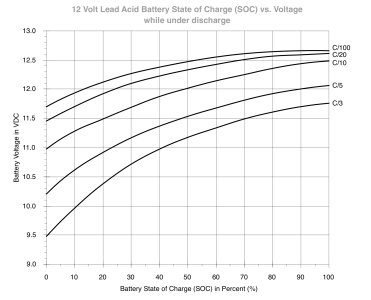stranded
Well-known member
Our house battery bank (400ah agm) has recently started behaving pretty normal down to about 85% charge and then suffering serious voltage drop under anything but light loads (tv or heating, but not both). They are 9years old including 4 periods of six month liveaboard, so don’t owe us anything. But as our usage pattern has changed this year I am just wondering if it is possible to know if the symptoms I describe are of a battery dying of old age or one which has been used too much for high inverter loads - notably 100 amps of immersion heater for 25 minutes, helped by up to 25 amps of solar? Or perhaps the combination of the two factors?

